Peepshow 2.0: Interactive Reflections is a research project that investigates the relationship between spectators and performers within a digital media context.
This research project focuses on the use of social media as a tool for women in Iran to express themselves, through digital performance, in ways that are not physically possible in public. As an artwork, the project also examines the ways in which social media reflects a viewer’s actions back at them. Through the development of an interactive and responsive installation, Peepshow 2.0 invites viewers to engage in the creation of a feedback loop that reflects and mirrors their participation.
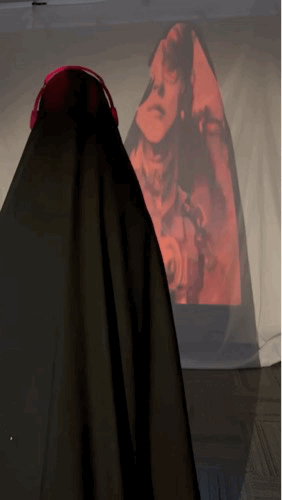
The Peepshow Sculpture
In the center of the exhibition room stood a sculpture of a young schoolgirl in full hijab, embodying the societal constraints on Iranian women. Visitors initially saw the sculpture from behind, its all-black attire obscuring immediate identification. The jarring image, reminiscent of recent schoolgirl demonstrations in Iran, confronted viewers with its immediate relevance. The figure’s position, seemingly gazing at cyborg-like projections on the wall, stirred speculation of its own cyborg nature, further heightening the element of surprise. The sculpture sparked discussions on topics like Islamophobia, religion, and personal freedom.
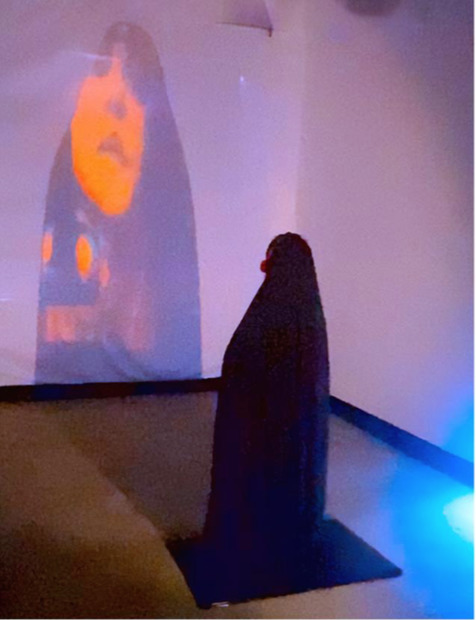
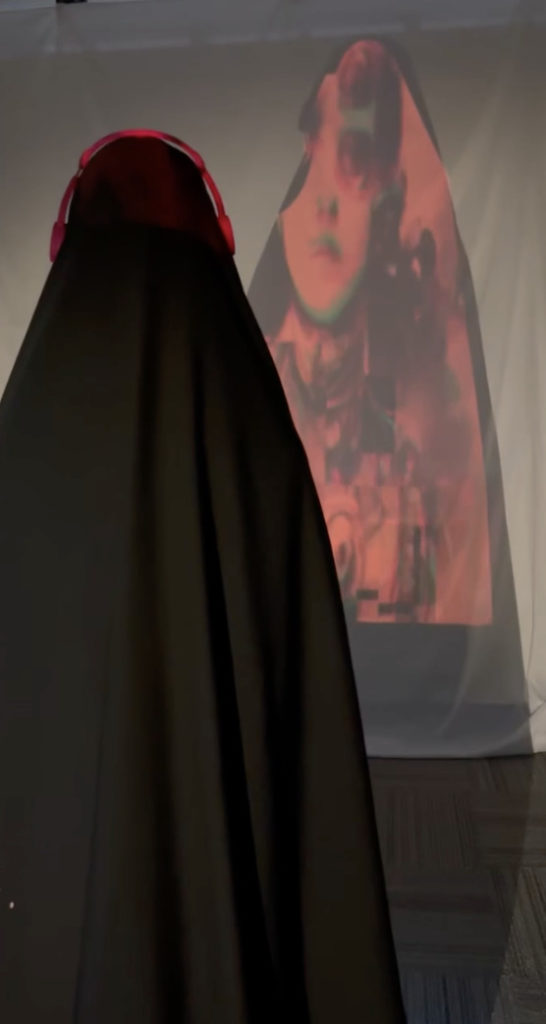
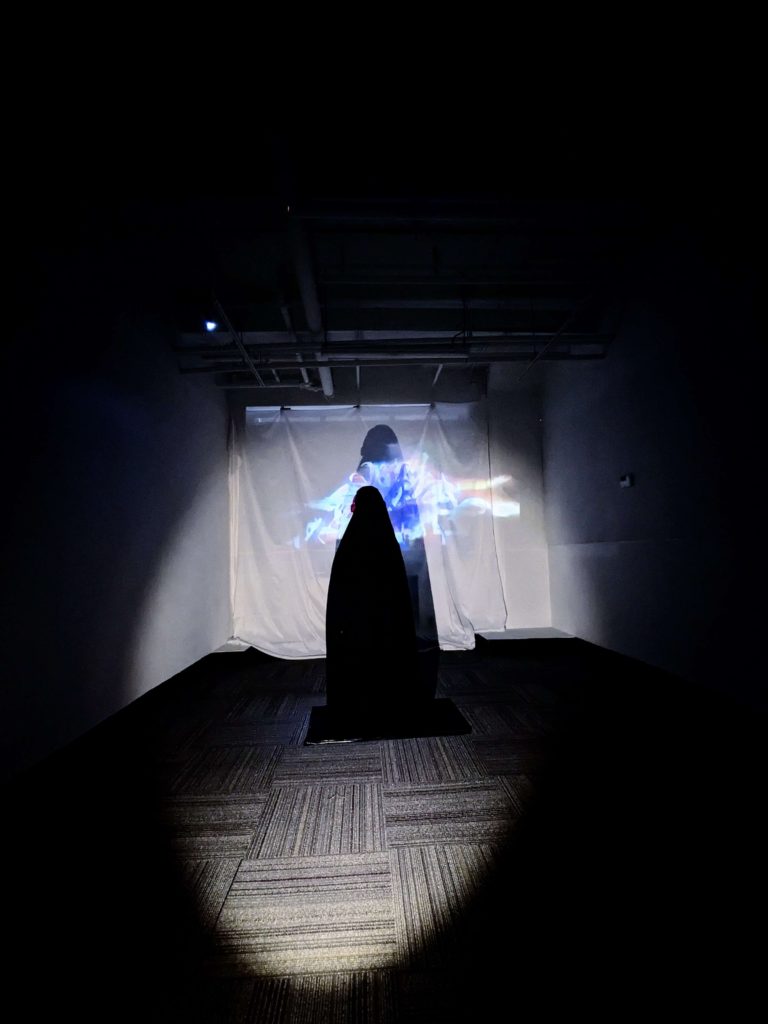
Participation
During the exhibition, when visitors moved around the room, they activated the sensor that started the music and changed the projection on the screen, turning the initial cyborg-style images into the artistic representation of videos of women dancing on the streets of Iran. Viewers’ shadows appeared beside these projections, leading some to dance alongside. This interaction resonated with David Rokeby’s notion from “Transforming Mirrors” that seeing one’s reflection makes one more self-aware and reactive to the installation’s feedback. Whether dancing or not, spectators often documented this experience with their phones, capturing their engagement with the artwork.
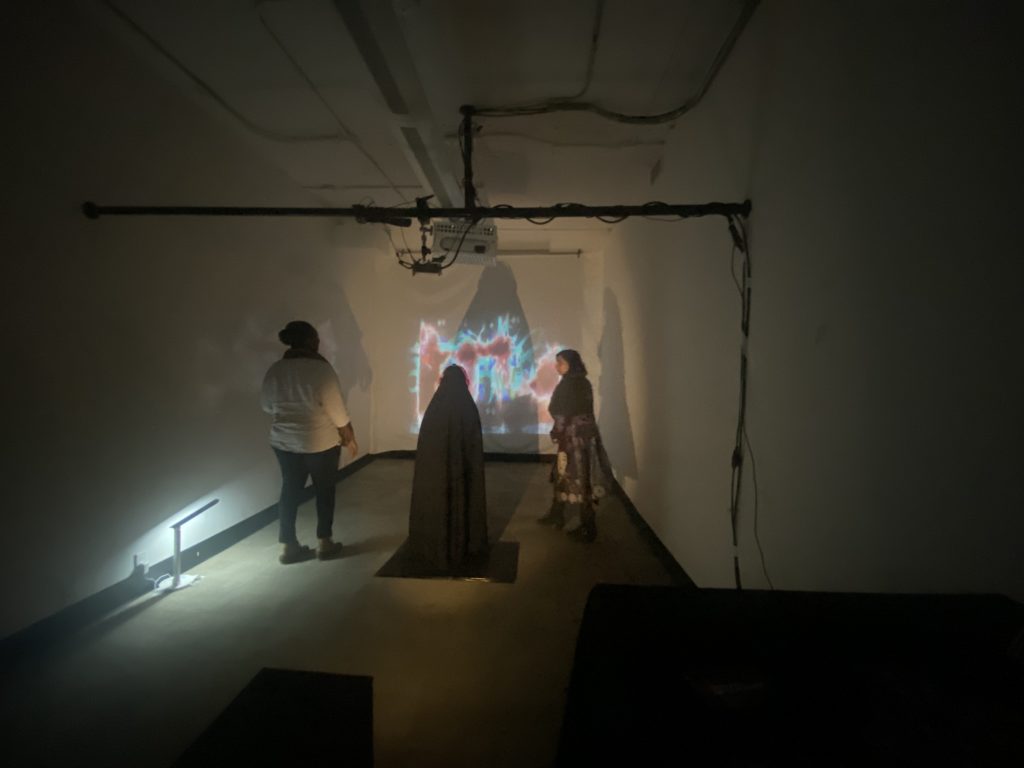
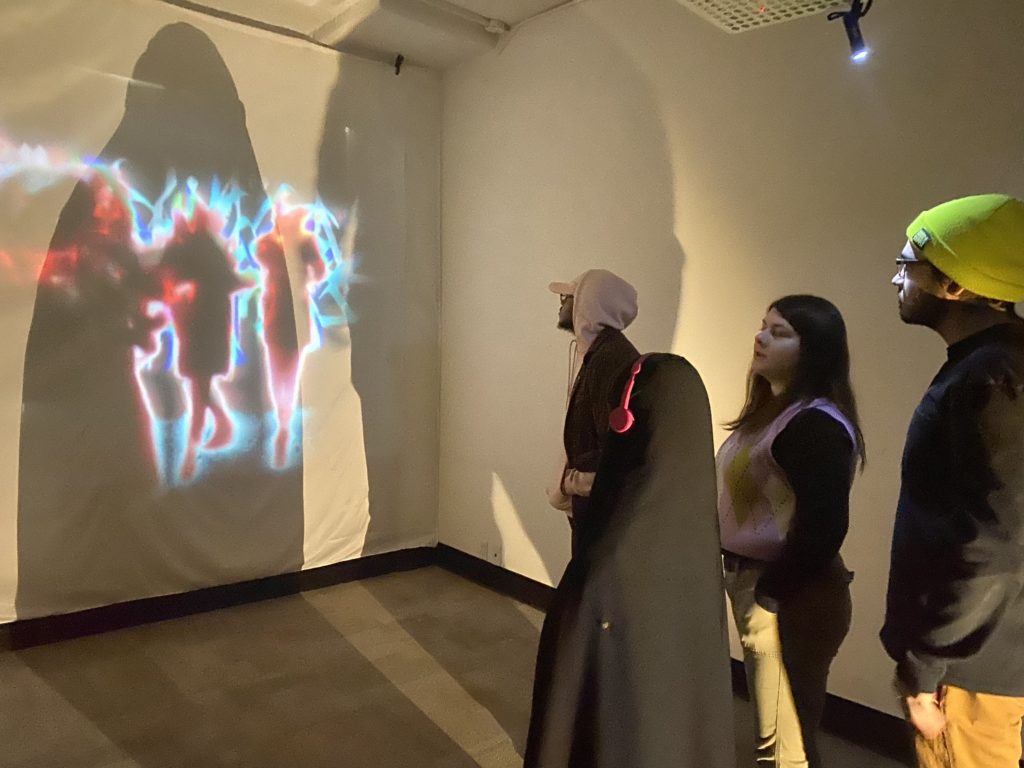
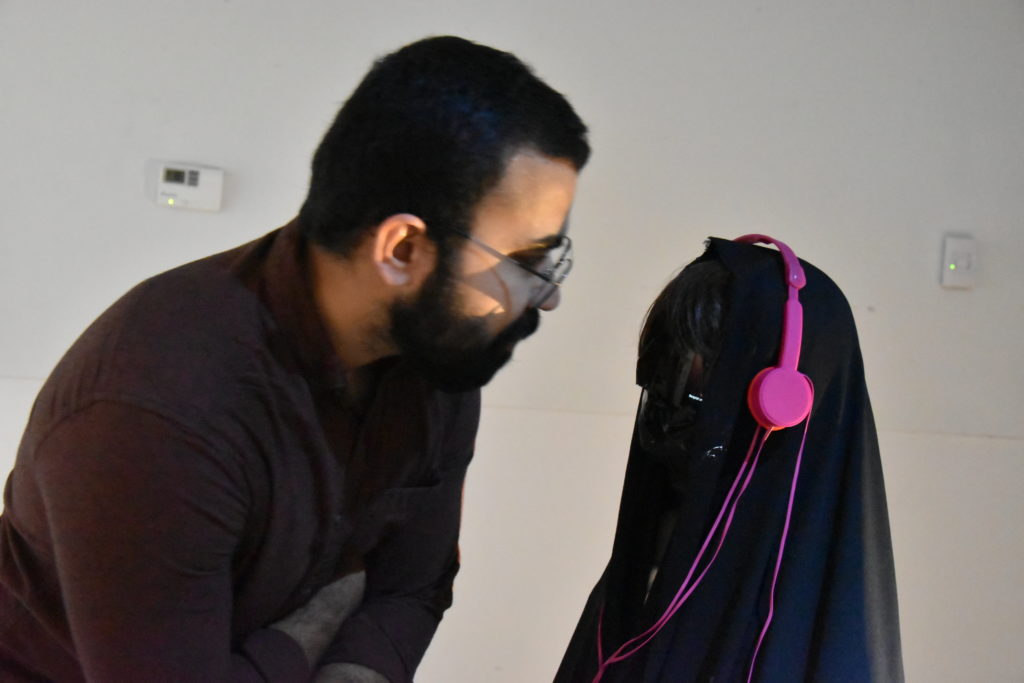
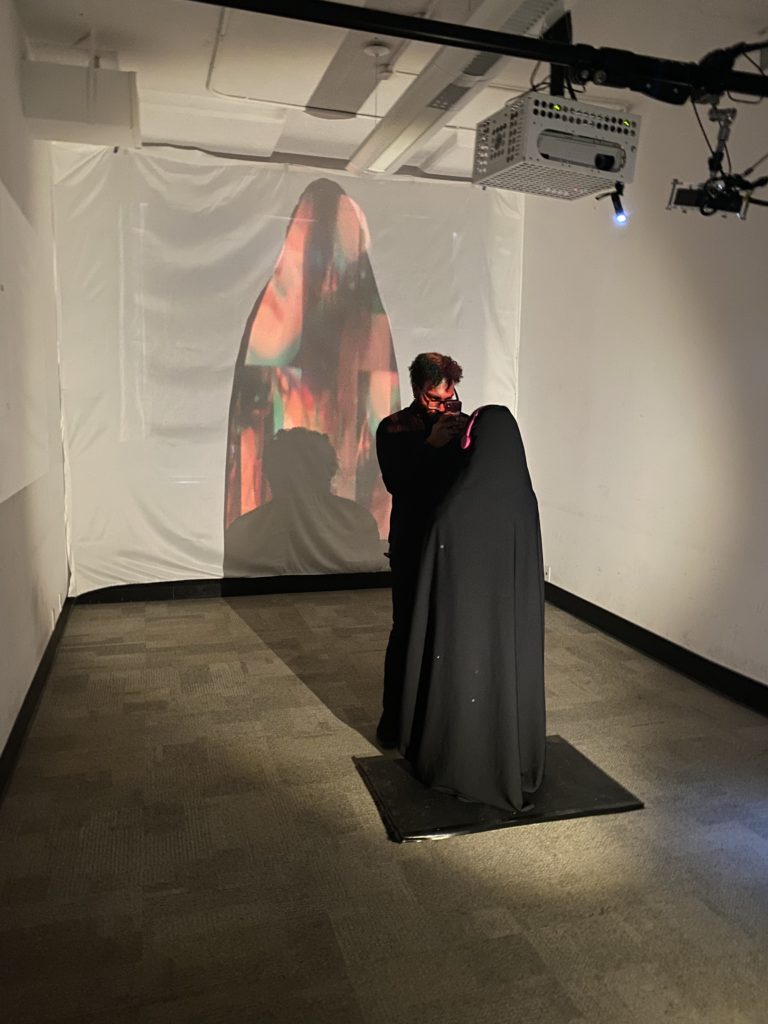
Spectator Participation
The experience of seeing viewers record their interactions with the installation on their phones was delightful. It allowed them to experience the installation at least twice, once through their naked eye and again through the screen of their mobile phones. I noticed that some of these recordings later appeared on my social media feed along with the spectator’s own comments reminding me of the feedback loop that is created between physical actions and social media content, as described by Maggie Nelson in her book On Freedom. As we record our physical experiences and post them on social media, algorithms use them to show us similar activities from our social networks, feeding us more of our own behavior and value systems.
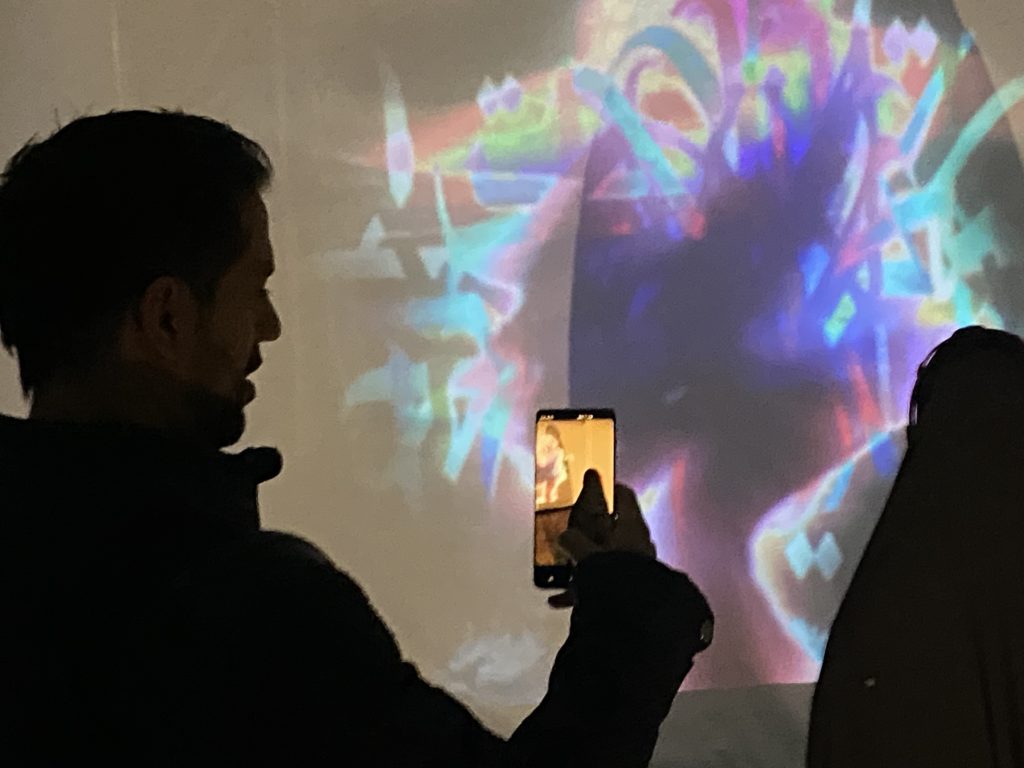
The interactions between the viewer, the artwork, and the screen created an interesting dynamic during the exhibition. The shadows of the viewers cast on the screen, alongside the projected videos, became a unique performative element of the overall work, creating distinct moments and shapes, as viewers’ shadows blurred the boundaries between the physical and digital worlds. Kate Mondloch, in her book Screens: Viewing Media Installation Art, has observed that this interaction (where the boundaries between the physical and the digital are blurred) allows viewers to disconnect from their immediate surroundings and engage with the performance on the screen. In other words, viewers disengage from the “here and now” and participate with the “there and then”.
Peepshow 2.0 created a means for social commentary and conversation on topics that people might find uncomfortable discussing, such as Islamophobia and religious beliefs vs. personal freedom. By examining the current situation in Iran through different cultural and social lenses and analyzing cyberfeminism, the exhibition helped shed light on the use of technology in relation to social freedom for women in Iran and how social media is used by women in Iran for self-expression and creating digital space to be visible.
